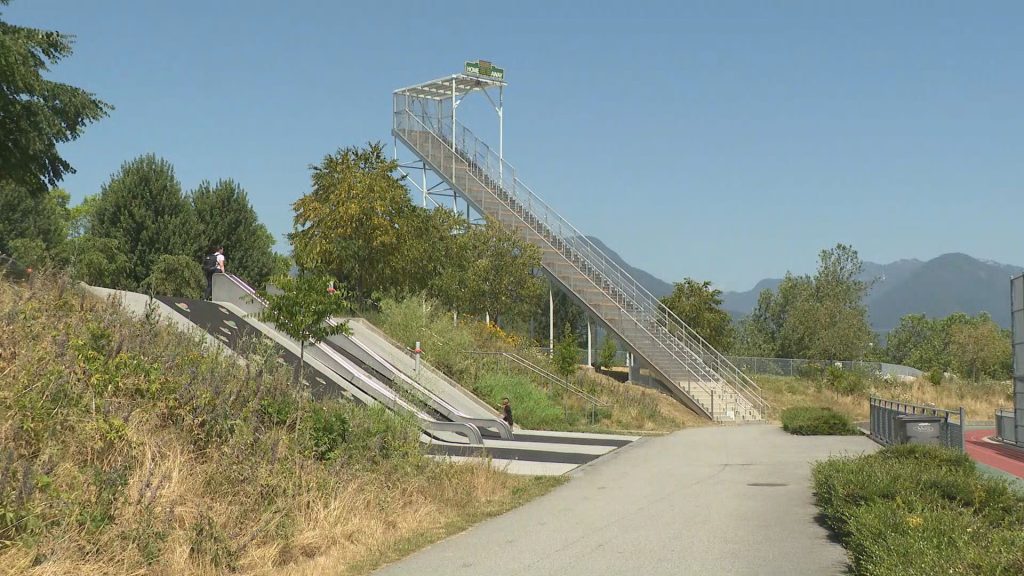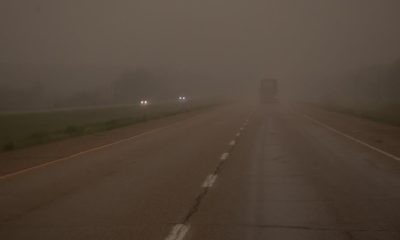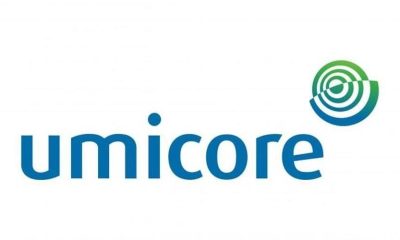
Photo Kira Perov/©Bill Viola Studio
These days, 79-year-old Robert Burke often spends his time on Vancouver Island with paintbrush in hand, revisiting scenes from his tumultuous youth.
The art he creates is a reflection of the years he spent in St. Joseph’s residential school in Fort Resolution, N.W.T., and later at St. Mary’s Boys Home in Edmonton — the two institutions that consumed much of his childhood from the age of four on.
“It wasn’t a very happy experience, being in the residential school. You know, it was life,” Burke said.
“It’s the way life was. You were on your own when you were at residential school, right?”
Burke was on his own the rest of the time, too, the orphaned son of a Black U.S. soldier and an Indigenous woman from Fort Smith, N.W.T., who abandoned him.
He grew up living with various people when he wasn’t at residential school. Sometimes, he would live with other Indigenous people out in the bush; other times, he spent the night at the police station just for a place to sleep.
They aren’t good memories, he noted. But he doesn’t blame the community or the region for what happened to him.
“I’m positive of what happened, because it made me who I am,” he said. Then, bluntly: “You know, I’m not a successful artist. But I’m getting known, and things are working out.”

At the schools themselves, there was no such thing as a Black community the way we might talk about it today, he noted, but there were other Black boys there. They felt a special connection to each other, he added.
Sixty-seven years on, Burke still talks to some of them a couple times a year.
One of the art series Burke has painted is about what he calls the “silent breed” — half-Indigenous children.
“I just did it as a result of knowing who I was, because most of my life they’ve been trying to tell me I was somebody else,” Burke said.
“I understood who I was, because I always knew who I was from childhood. You know, you’re called an [N-word] when you’re a little kid, you know what that’s all about.”
LISTEN | Interview with Robert Burke starts at 26:55
The Trailbreaker42:03The First Hour of the Special Show Live From the LJJ Barber Shop
Special show live from the LJJ Barber Shop for the Black History Month
Though Burke doesn’t know who his father was, he knows he was one of thousands of U.S. soldiers who came north to work on the Canol Road, Canol Pipeline and Alaska Highway in the early 1940s.
Unlike white soldiers, those Black soldiers were strictly segregated from local communities, said Ken Coates, a historian who has written about and researched the history of that period.
It was “an era of great stereotypes and all sorts of assumptions,” Coates noted. The Army wouldn’t let Black soldiers close to communities, instead putting them up in camps miles out of town.
Still, encounters would happen between soldiers and community members — “party kind of relationships that were not terribly romantic,” Coates said, as well as some romances and also more violent attacks.
“There were stories going up along the Mackenzie Valley, particularly in northern Alberta, of situations where there were children who came out of these relationships,” Coates said.
After his years at residential school, Burke said the government sent him to a farm where he performed unpaid labour.
He eventually struck out on his own, starting a family and becoming a heavy machine operator.
He began working in the logging industry, and remained a contractor until he was 53.
That’s when he went back to school for art.
He’s straightforward about what his art means, and how it’s generally received by others.
“Most of my paintings are social paintings, so most people don’t particularly like them,” he said.
“That’s all interrelated with getting people to understand things, and also clearing my mind, too.”
Support is available for anyone affected by their experience at residential schools or by the latest reports.
A national Indian Residential School Crisis Line has been set up to provide support for survivors and those affected. People can access emotional and crisis referral services by calling the 24-hour national crisis line: 1-866-925-4419.
Mental health counselling and crisis support is also available 24 hours a day, seven days a week through the Hope for Wellness hotline at 1-855-242-3310 or by online chat at www.hopeforwellness.ca.

A new art installation now towers over Vancouver’s Hastings Park fields in celebration of the city’s history of spectators and sports.
Home + Away is a sculpture by Seattle artists Annie Han and Daniel Mihalyo of Lead Pencil Studio, which opened Monday in the southeast end of the historic park.



Open Gallery
6 items
It’s a 17-metre-tall structure that resembles a narrow set of bleachers — similar to the stands of the Empire Stadium, which stood on the site of the park from 1954 to 1993 and hosted The Beatles, among many others. It recalls a covered ski jump that stood there in the 1950s and the nearby wooden rollercoaster at the PNE.
The city says the public is invited to walk the stairs and sit on the benches.
“In addition to being visually striking, this artwork is intended to be ascended, sat on and experienced. It offers exciting experiences of height and views and provides 16 rows of seating for up to 49 people, making for a unique spectator experience when watching events at Empire Fields,” the city said in a release Monday.
The idea for the park to include public art was outlined in the Hastings Park “Master Plan,” first adopted by the city in 2010. The city says Han and Mihalyo first presented their design in 2015.
“It’s wonderful to see this piece realized within the context of such a well-used public space,” said Han.
“Home + Away was inspired directly by the site history of spectatorship, and we hope it will connect Hastings Park users to that history and the majestic views of the environment for many decades to come,” added Mihalyo.
The artwork features a large light-up sign, in the style of a sports scoreboard, that reads “HOME” and “AWAY.”

Bill Viola, whose decades-long engagement with video proved vital in establishing the medium as an integral part of contemporary art, died on July 12 at his home in Long Beach, California. He was at 73 years old. The cause was complications related to Alzheimer’s disease. The news of his passing was confirmed by James Cohan Gallery.
Viola’s works are centered around the idea of human consciousness and such fundamental experiences as birth, death, and spirituality. He delved into mystical traditions from Zen Buddhism to Islamic Sufism, as well as Western devotional art from the Middle Ages and the Renaissance in his videos, which often juxtaposed themes of life and death, light and dark, noise and silence. These explorations were achieved by submerging viewers in both image and sound with cutting-edge technologies for their time.
“I first used the camera and lens as a surrogate eye, to bring things closer, or to magnify them, to experiment with perception, to extend vision and make lengthy observations of simple objects,” Viola said in a 2015 interview. “Once you do that, their essence becomes visible. So I suppose I was always interested in the inner life of the world around me.”
Beginning in the 1970s, Viola created videotapes, architectural video installations, sound environments, electronic music performances, flat panel video pieces, and works for television broadcast—all of which expanded the scope of the medium and established Viola as one of its most notable practitioner.

Photo Kira Perov/©Bill Viola Studio
Bill Viola was born in 1951. He grew up in Queens and Westbury, New York, and attended P.S. 20 in Flushing, before receiving his BFA in experimental studios from Syracuse University in 1973. There, he studied with visual art with the likes of Jack Nelson and electronic music with Franklin Morris.
Following his graduation, between 1973 to 1980, Viola studied and performed with composer David Tudor in the music group Rainforest, which later became known as Composers Inside Electronics. He also worked as technical director at the pioneering video studio Art/tapes/22 in Florence, Italy from 1974 to 1976. During that time he encountered the work of other seminal video artists like Nam June Paik, Bruce Nauman, and Vito Acconci.
Viola was subsequently an artist-in-residence at New York’s WNET Thirteen Television Laboratory between 1976 to 1983, wherein he created a series of works that premiered on television. He traveled to the Solomon Islands, Java, and Indonesia to record traditional performing arts between 1976 and 1977. Later that year, Viola was invited to show work at La Trobe University in Melbourne, Australia, by cultural arts director Kira Perov, with whom he married and began a lifelong collaboration.
He was appointed an instructor in advanced video at the California Institute of the Arts in Valencia, California in 1983. He was the Getty Research Institute scholar-in-residence in Los Angeles in 1998 and was elected to the American Academy of Arts and Sciences in 2000.
In 1985, Viola received with a Guggenheim Fellowship for fine arts, and later that decade, in 1989, he was awarded the MacArthur “Genius” Fellowship. His work was also featured in some of the world’s most notable exhibitions, including Documenta VI in 1977, Documenta XI in 1992, the 1987 and 1993 editions of the Whitney Biennial, and the 2001 Venice Biennale.
In 1995, he represented the United States at the 46th edition of the Venice Biennale. For the pavilion, Viola produced the series of works “Buried Secrets,” including one of his most known works The Greeting, which offers a contemporary interpretation of Pontormo’s oil painting The Visitation (ca.1528–30). The Deutsche Guggenheim Berlin and New York’s Guggenheim Museum commissioned the digital fresco cycle in high-definition video, titled Going Forth By Day, in 2002.
Viola’s work was the subject of a major 25-year survey at the Whitney Museum of American Art in 1997, which subsequently toured internationally. His work has been the subject of major museum retrospectives in the years since, including at the Grand Palais in Paris (in 2014), the Palazzo Strozzi in Florence (2017), the Guggenheim Bilbao in Spain (2017), and the Barnes Foundation in Philadelphia (2019), as well as an exhibition pairing his work with that of Michelangelo at the Royal Academy of Art in London in 2019.
Viola is survived by his wife Kira Perov, who has been the executive director of his studio since 1978, and their two children.
“One thing that’s very exciting about video that has turned me on since I first saw this glowing image way back in 1970 is that it can be so much,” Viola said in a 1995 with Charlie Rose on the occasion of this US Pavilion at the Biennale. “Furthermore, what’s really exciting is I don’t think it’s been since really the Renaissance where artists have been able to use a medium that one could say is the dominant communication form in society.”


After grind of MLS regular season, Toronto FC looks forward to Leagues Cup challenge


CanadaNewsMedia news July 26, 2024: B.C. crews wary of winds boosting wildfires


Ontario expanding access to RSV vaccines for young children, pregnant women


In President Milei’s sit-down with Macron, Argentina says the leaders get past soccer chant fallout


Federal grand jury charges short seller Andrew Left in $16M stock manipulation scheme


French train lines hit by ‘malicious acts’ disrupting traffic ahead of Olympics, rail company says


People should stay inside, filter indoor air amid wildfire smoke, respirologist says


Umicore suspends construction of $2.76B battery materials plant in Ontario